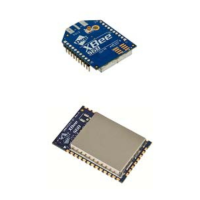© 2014 Digi International Inc. 16
XBee/XBee-PRO
®
DigiMesh 2.4 User Manual
5 Differential non-linearity is the difference between the current code width and the ideal code width (1LSB). The current code width is the difference
in the transition voltages to and from the current code.
6 Integral non-linearity is the difference between the transition voltage to the current code and the adjusted ideal transition voltage for the current
code. The adjusted ideal transition voltage is (Current Code.1/2)*(1/((V
REFH
+E
FS
).(V
REFL
+E
ZS
))).
7 Zero-scale error is the difference between the transition to the first valid code and the ideal transition to that code. The Ideal transition voltage to a
given code is (Code.1/2)*(1/(V
REFH
.V
REFL
)).
8 Full-scale error is the difference between the transition to the last valid code and the ideal transition to that code. The ideal transition voltage to a
given code is (Code.1/2)*(1/(V
REFH
.V
REFL
)).
9 Input leakage error is error due to input leakage across the real portion of the impedance of the network driving the analog pin. Reducing the
impedance of the network reduces this error.
10 Total unadjusted error is the difference between the transition voltage to the current code and the ideal straight-line transfer function. This measure
of error includes inherent quantization error (1/2LSB) and circuit error (differential, integral, zero-scale, and full-scale) error. The specified value of
E
TU
assumes zero E
IL
(no leakage or zero real source impedance).

